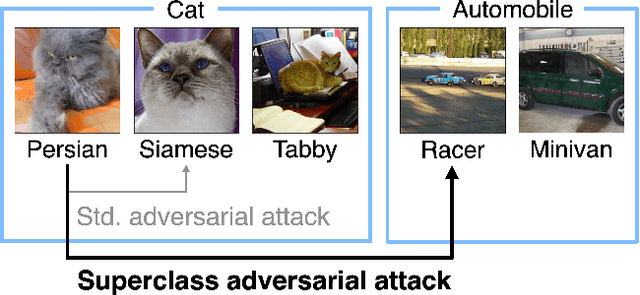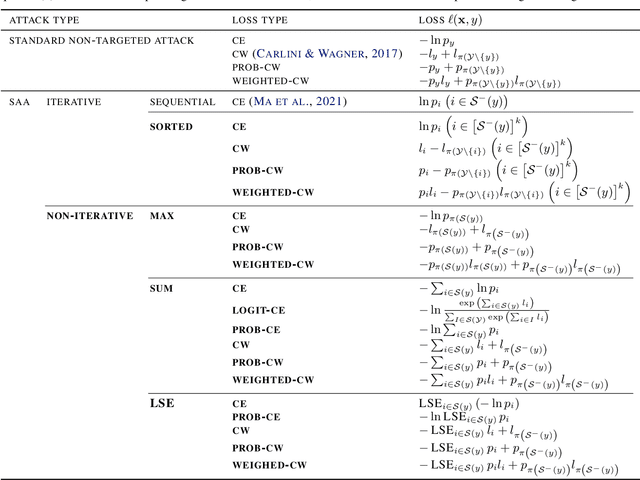Superclass Adversarial Attack
Paper and Code
May 29, 2022



Adversarial attacks have only focused on changing the predictions of the classifier, but their danger greatly depends on how the class is mistaken. For example, when an automatic driving system mistakes a Persian cat for a Siamese cat, it is hardly a problem. However, if it mistakes a cat for a 120km/h minimum speed sign, serious problems can arise. As a stepping stone to more threatening adversarial attacks, we consider the superclass adversarial attack, which causes misclassification of not only fine classes, but also superclasses. We conducted the first comprehensive analysis of superclass adversarial attacks (an existing and 19 new methods) in terms of accuracy, speed, and stability, and identified several strategies to achieve better performance. Although this study is aimed at superclass misclassification, the findings can be applied to other problem settings involving multiple classes, such as top-k and multi-label classification attacks.
 Add to Chrome
Add to Chrome Add to Firefox
Add to Firefox Add to Edge
Add to Edge